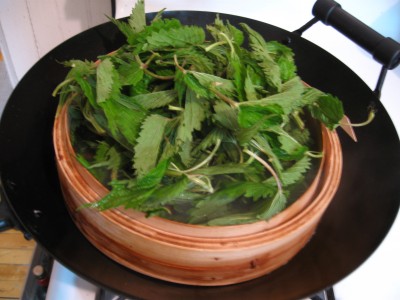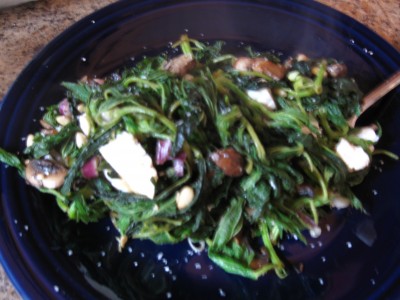Weedeater
By martha

On Tuesday I graduated, finally, from the U. of I. Extension’s master gardener program. This is noteworthy not because I consider myself suddenly qualified to dispense any sort of horticultural advice — despite the certificate and spiffy new name tag I am still shocked and amazed whenever anything grows, anywhere. But I am a bit proud, as it took me twice as long to get through the program than any normal person. I did the MG coursework in the winter of 2007 but because I decided to run away to Wisconsin last summer I did not complete the required 60 hours of volunteer work — usually wrapped up within a year — until last month.
Efficiency: It’s overrated.
Anyway. I mention this because one of the earliest teaching moments in the MG class is the moment when the person teaching weed managment asks the class to define a weed.
The correct answer (and I paraphrase): “A weed is a plant growing where you want another plant to grow.”
A weed’s identity is inextricably bound up with its context, in other words. There is no essential weediness to its nature. I thought of this yesterday as I prepared to chow down on a big plate of stinging nettles.
The nettles came from Vera‘s first delivery last week, along with green garlic, more chard, tender asparagus, and some pungent lemon balm. But while I enjoyed her delicate chicken and nettle soup earlier this year, my direct experience with nettles is limited to several unfortunate childhood mishaps that left me coated in calamine lotion for days.
Safe to say I was a little leery. But in the context of my kitchen they seemed harmless enough, so I pulled on some gloves and set to work. I washed and (sortof) de-stemmed the greens, then steamed them to neutralize the toxic needles. While they were wilting I sauteed the rest of the mushrooms with some green garlic and pine nuts, then tossed it all together with some more dry ricotta.

For my first foray into the world of otherwise fear-and-rash-inducing plants, not bad! Spicy and surprisingly filling, though next time I would do a more thorough job of picking out the stems. They were a little woody.
After lunch, I sat back down at the computer and almost immediately stumbled onto, whattaya know, an article in the Wall Street Journal on the growing popularity of weedy greens. [ It’s Salad Days for Weeds.]
I felt very au courant.
If you’re interested in learning more about the uses and applications of weeds, Nance is offering three classes over the next month on “Weeds as Foods and Medicines;” the first one, on “pickles, pates, dips, spreads, and sprinkles,” is this weekend. The next two cover herbal skin care (6/13) and tinctures (6/20). See her site for more on all three.
Also, while we’re on the subject of weeds, I’ll just plug, again, some good advice on the subject of surviving, and maybe even thriving, in an environment hostile to your species.
“Weeds are really good at hiding in the open. Their secrets are kept close in their invisibility. Their numbers are always spreading.
“Be a weed: Thrive no matter where you are. Make your own food and oxygen. Make soils better for the next inhabitants. Send out a gazillion seeds. Reincarnate frequently in unexpected places.”
And if sometimes you can’t quite be the weed, you might as well at least eat them.
Congrats on the Master status! Who cares how long it took.
I have a lot of weedy greens in the garden right now — at least this is how I interpret the ONE successful green from my alleged mesclun “mix.” I have no idea what it is. But with pine nuts and mushrooms, I’m sure it will be excellent.
Thanks! Good luck with the “mesclun.” Just remember — everything tastes better with pine nuts. Olive oil and salt also helpful.